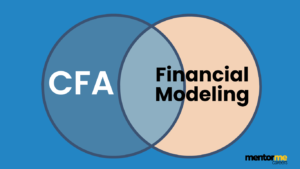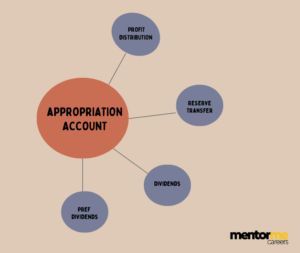Last updated on October 22nd, 2024 at 12:13 pm
Financial due diligence or quality of earnings analysis is the method of ensuring the charge of an asset is consistent with its working performance “under the hood.” Assessing the quality of income is one of its key tests: How sustainable is the business stated economic performance?
What is the quality of earnings
Quality of earnings ratio = Net cash from operating activities/Net income
The quality of profits refers to the share of earnings as a result of the core working activities of a commercial enterprise. Thus, if a commercial enterprise reviews a growth in income because of progressed income or value reductions, the quality earnings are taken into consideration to be high. Conversely, a company may have low-great profits if adjustments in its profits relate to different issues, including the competitive use of accounting rules, the removal of LIFO stock layers, inflation, the sale of belongings for a gain, or will increase in company risk. In general, any use of accounting associated with briefly bolstering profits lessens the quality of earnings heavily.
The impact on quality of earnings?
Investors want to see quality earnings on the grounds that those outcomes have a tendency to be repeated in future times and offer greater cash inflows for investors. Thus, entities which have high income also are much more likely to have high stock prices. Conversely, the entities reporting lower quality earnings will now no longer appeal to investors, ensuing in decreased stock prices.
Characteristics of good earnings?
A key feature of quality income is that the income is with ease repeatable over a chain of reporting durations, in preference to being income which might be best pronounced because of the end result of a one-time event. In addition, a company must automatically offer specific reviews concerning the assets of its income and any modifications withinside the future trends of those assets. Another feature is that the reporting entity engages in traditional accounting practices so that every applicable cost is as it should be identified in the perfect period, and sales aren’t artificially inflated.
How does it work?
There are many approaches to gauging the quality of income by using analysing an organisation’s annual document.
Analysts commonly begin on the top of the profits assertion and paint their manner down. For instance, corporations that report high-income growth may additionally display a high increase in credit earnings. Analysts are cautious of income which might be due best to free credit terms. (Changes in credit-earning or debts receivable may be best located at the stability sheet and coins glide assertion.)
Working down the profits’ assertion, analysts then may search for models among working coins glide and internet profits. An organisation that has a high online profit but bad cash flows from operations is reaching the ones above in income someplace aside from income.
Example of quality earnings?
A smooth the way for an enterprise to govern its pronounced earnings is to decrease its capitalisation limit in order that extra costs are categorised as constant assets. This way that costs are deferred to later periods, whilst they may be identified through depreciation. This affects a high constant asset register; however, it can deliver growth in earnings over the fast term.
What is mentioned in the quality of earnings reports?
Through thorough financial research, a Quality of Earnings report, also known as a QOE or QofE report, aids investors in understanding the historical earnings and projected performance of the company.
Further than the financial account and profit and loss declaration, QOE reports verify the underlying data rigorously and conduct management interviews to evaluate its correctness and risk.
Consider a QOE report as having a used vehicle inspected by a mechanic before purchase. Even when the check engine light is out, you shouldn’t assume the automobile is in good functioning condition. Businesses are no different; sometimes, beneath impressive financial accounts, hazards or significant mistakes can be hidden. These dangers and errors are intended to be found via a QOE report.
Depending on who is asking for the information—the buyer or the seller—the QofE report will be used differently.
Sales Side of Quality of Earnings Report
Before approaching potential purchasers, sellers request a Quality of Earnings report to look for any issues that can lead to the sale falling through. Sell-side research will not only help you find possible issues, but it will also provide you insight into the company from the viewpoint of a prospective investor or buyer. In either scenario, the deep insight helps you to avoid any difficulties before the sale.
Purchase Side of Quality of Earnings Report
In order to help buyers decide whether the firm is worth the price, a purchase side of the quality of earnings report includes more information about the business’s net income and EBITDA. For instance, the report assesses the consistency of the company’s financial position of the company, potential overstatements of inventories, and the calibre of the company’s assets and liabilities.
Buyers utilise the findings of a QOE study to feel comfortable with their purchase, bargain for better conditions, or walk out the door from a contract with too many hidden issues.
Assessing Quality of Earnings in Due Diligence
Quality of earnings answers the salient query of whether or not a topline or fee line from the current year is from a major business activity or is only a one-off. Due diligence practitioners are consequently seeking to verify what the regular and sustainable degree of income is that allows you to make sure the multiple-primarily based cost being paid withinside the transaction is fair.
Of all of the analyses in an FDD report, exceptional income is possibly the maximum intently watched, as agency price is regularly pushed by FDD-adjusted EBITDA in place of the determined said by user management. A successful $100k discount to EBITDA could translate to a $1 million discount in fee for a deal going at around 10x EBITDA multiple. Therefore, changes commonly deemed immaterial are all under scrutiny because of their potential effect on the fee.
Conclusion
This walkthrough is meant to present a realistic instance of why QofE is essential for the duration of deal negotiations and the way monetary due diligence works in practice. This has to give you a few ideas about those fee drivers in an offer situation. However, those might need to be tailored to the particular wishes of a deal or a business, for which it might help to interact with specialised experts to chalk out a custom plan and place your quality foot ahead in deal negotiation.




